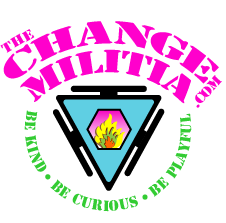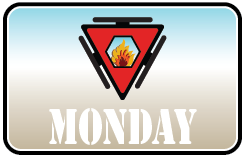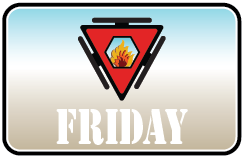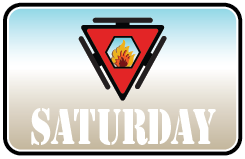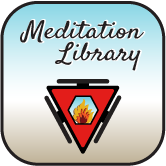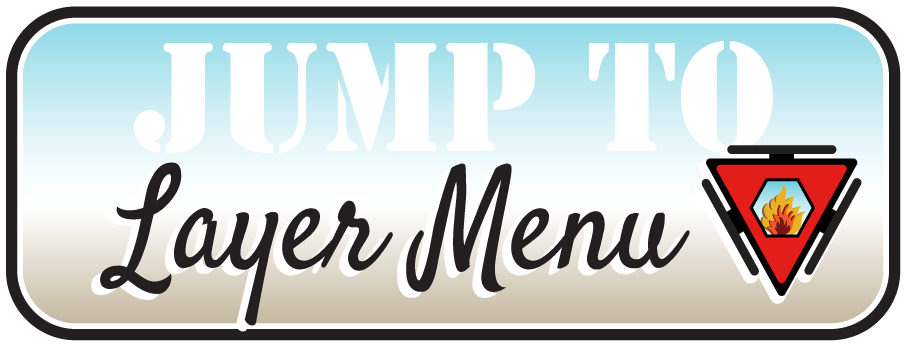Layer Twenty-One, Week Four – Sunday
- Read Week Four Concepts
- Watch videos and read description for The Dots – Chakra Three
- Do Movement – The Dots – Chakra Three
Sunday’s Focus
Examine some of your hyper-sensitivities. Explore, poke, and prod. Feel how much energy you store to defend them.
Sunday’s Concepts
A bias is favored by your subconscious mind because it reduces the possibility of change – of moving into the unknown. You have thousands of biases and each will have a reaction cycle.
As you recall from L21W3, a reaction cycle is what you do after a bias is triggered.
You react because your systems are ready to react. They have a defensive posture. Every cell in your body is, to some degree, prepared for attack. How much energy is reserved by each cell determines whether it is healthy and sensitive or unhealthy and unbalanced, hyper-sensitive.
Energetically, you store readily accessible energy in each of your chakras, organs, tissues, bodies, and auras. Healthy and sensitive energy will be responsive. Hyper-sensitive energy will be reactive and usually over-reactive. Reactive energy is a projection of a possible future threat and as such is rarely necessary.
I saw a cartoon recently that perfectly illustrates this idea. It had two dogs lamenting the lack of appreciation by their owners and said something like “why can’t they see that every day we are protecting them from certain death from that serial-killer in the mail truck?”
Reactive energy is also very resistant to change. The subconscious mind believes the best way to protect you is to ensure that nothing changes and if it does, it changes in a familiar and habitual way without any degree of discomfort.
Monday’s Focus
Feel the resistance that accompanies your biases. How do you stubbornly defend them? How right or necessary do they feel?
Monday’s Concepts
So, the reactive energy is stubborn. It requires your responsive energy to push through or go around it. Biases make everything feel harder than they actually are.
If I decide I hate to do the dishes, they will be a chore that I resist. If I don’t, they will be a task I complete. I could celebrate washing dishes as a sign of my good fortune for the nutritious food they held. I could approach cleaning dishes as a symphony of movements that I orchestrate artistically with a flowing grace.
Resistance holds a lot of energy and is constantly looking to confirm its existence … by reacting.
Let’s go through the pathways that energy can take from absorption to expenditure.
First, energy is metabolized from environmental sources – food, water, conversation, light, sound, touch, people, animals, plants, chemical interaction, etc. through the chakras and held in the energy fields that surround each chakra, auras.
There, it is held and configured into your fears, biases, images, beliefs, tolerances, and what is left over is stored as unbiased, RFU (ready for use) energy.
You will also preferentially store your energy into your most used and abused chakras. If you have a severe fear of processed cheese, that energy will be replenished before anything else. If you are an overthinker, you will store a bunch of energy in your head.
Tuesday’s Focus
Feel for the things that are undercharged because of your biases. What is being weakened and malnourished?
Tuesday’s Concepts
All your hyper-sensitivities will be energized in an unbalanced way. If your processed cheese fear accompanies an obsessive hatred of Abyssinian cats, you will keep that configuration fully charged with energy by shunting incoming energy to it after your cheese fear is filled but before anything else. And so it goes for the rest of your fears, judgments, and intolerances.
If your healthy stomach has been working overtime digesting your homemade gouda and your eyes are strained from looking for cats, your stomach and eyes won’t rejuvenate until after every fear ahead of them in line is refilled with energy.
Biases lead to disease, dysfunction, and imbalance. They shift the priority of your energetic distribution from health to fear.
A healthy energy distribution will refuel the most depleted and important areas first. That makes sense, right?! If you know the oil is low in your car, you add oil, you don’t add washer fluid.
Let’s say you only have 45 seconds a day to do car maintenance. Without fear, you would check the most vital areas first and on successive days check other things in descending order of importance.
If you are totally sketched out by bugs on your windshield and the thought of butterfly guts wrenches your belly, you will prioritize cleaning your windshield and checking your washer fluid. Depending on your level of fear, you might do this everyday … never leaving any time to check oil, brake fluid, coolant, etc. You can see how your car would be considerably less road-worthy in this scenario. Your fears and biases do the same thing with your body, thoughts, and emotions. You also do it with your judgements, intolerances, and criticisms.
Layer Twenty-One, Week Four – Wednesday
- Read Wednesday’s Concepts
- Do Movement – The Dots – Chakra Three
Wednesday’s Focus
Name and explore your greatest fear. Evaluate the energy expense. How much of your life-force is tied up and used to maintain that fear? What biases are the result?
Wednesday’s Concepts
If you are an incredibly angry person, you will refill the energy of your anger quotient before allowing the energy to make its way to other areas.
If you have a fear of not being enough, your body will hang on to (store as fat) as many calories as possible before you refill the coffers of your other tissues.
Ever notice how many recent divorcees look fit and healthier? Their priorities change from bad relationship to celebrating independence. People with near-death experiences often completely alter the path of their lives. They go from worrying about dying to excited to be living.
The recent divorcees and near-death survivors change where they preferentially stored energy from their fears and dysfunctions to creating healthy opportunities.
Healthy configurations prepare the energy to meet the most efficient and beneficial intention. Your stomach’s primary intention is to continue the digestion started in the mouth and pass the solids and liquids on to the small intestine. A healthy stomach is ready to digest whatever comes its way.
An unhealthy stomach may just be under-energized if most of the energy is meeting some other demand. If the stomach has a fear bias, it may be configured to be over-sensitive to certain foods, lack of food, too much food, not enough or too much sugar. Those sensitivities create an imbalance. A fearful stomach defensively prepares for certain foods and doesn’t give everything else enough energy. Depending on the level of imbalance, the result could be anything from mild indigestion, ulcers, or cancer.
A healthy stomach will be responsive. It will assess all current energy configurations and determine the most beneficial and efficient use. It will fulfill its task without preference, and it will have much more energy to be efficient because it isn’t holding any in fear reserve.
Layer Twenty-One, Week Four – Thursday
- Read Thursday’s Concepts
- Do Movement – The Dots – Chakra Three
Thursday’s Focus
Read Thursday’s Concepts and then curiously examine your beliefs about trust. See if you can find the fear it holds.
Thursday’s Concepts
In a healthy relationship, you will have a store of energy ready to be utilized for connection, collaboration, conversation, and intimacy. It will feel very neutral, ready for anything without any demands that it be configured in any familiar ways.
In an unhealthy or less than healthy relationship, energy will be pre-configured to match your biases – judgments, demands, intolerances, and fears. If you are jealous, you maintain a store of energy that fuels your jealousy. You will energize it before you fill your affection, appreciation, admiration, and love energies. Since the jealousy energy field is always fully charged, it will be the first to react, the most powerful, and the most influential. AND it will constantly be looking for confirmation of its fears. The confirmations may be real or imagined but will almost certainly be overvalued.
When you are in fear or when that fear turns into a habit, the resulting imbalance becomes entrenched. If you don’t trust your spouse, you will always be looking to confirm that fear. You will also fuel all the things that go along with distrust – doubt, suspicion, and pessimism. Most of your trust energy will be configured toward that group of fears. The opposite of distrust isn’t trust. Trust is also a fear-based judgment. To trust is to decide to temporarily let go of your distrust. Trust has limits, rules, and demands. Trust requires that you maintain a degree of vigilance … which requires energy.
The opposite of trust is something more like playful, flowing communion. It will embrace chaos and the unknown. It will feel energized and enchanted. It will be full of wonder and curiosity. It will have gratitude and affection. It will be welcoming. It won’t have any defensive energy. It will be fearless.
Friday’s Focus
Spend some time writing down the demands, rules, and limits you place on your relationships.
Friday’s Concepts
I am a big fan of monogamous relationships. I am committed to maintaining the integrity of our love, affection, and respect. I trust myself and my partner. Sounds good, right?! Very socially acceptable! But guess what? It is based on fear. I am afraid of not being in a monogamous relationship so much that I create a bias. I have a demand that my partner and I maintain a monogamous relationship. It has rules, demands, and limits. Monogamy requires that I maintain a degree of vigilance.
All relationship energy has to filter through the rules and demand of that monogamy bias. As I do, it confirms the bias. As it confirms it, it replenishes it. The amount of energy it requires reduces my energy flows afterward. Monogamy takes a toll, literally.
My demand for a monogamous relationship impairs my ability to be fully present and open to opportunities for playfulness, opportunity, and adventure. I am not the person or partner I could be because I am afraid of what might happen if I wasn’t.
That non-monogamous fear is nebulous. It isn’t clearly, completely, or succinctly defined. It would include stories that my subconscious mind fabricates, past events, and all the things I’ve seen, read, and heard about. If would include stuff like vague emotional feelings, fear of loss, loneliness, rejection, not-enoughness, too-muchness, and weakness. It would include emotionally-charged words like betrayal, divorce, and infidelity.
Layer Twenty-One, Week Four – Saturday
- Read Saturday’s Concepts
- Do Movement – The Dots – Chakra Three
Saturday’s Focus
Feel into the monogamy, polygamy, or celibate biases for yourself. Can you feel how they are connected?
Saturday’s Concepts
Monogamy is a belief system based on fear. It limits my ability like every other belief I hold. Beliefs must be propped up, constantly confirmed, and fed with enough energy to maintain the value placed on them. I will feed my belief systems before all others. And remember, all beliefs are fear-based. Every.Single.One.
Monogamy disempowers and imbalances me to the degree I value it. And the solution isn’t to be polygamous or celibate. That would generate much more fear because I would be in a constant state of worry.
Fears that are triggered by monogamy would also be triggered by being alone or in multiple relationships. At least being monogamous has large periods of time when I feel safe and comfortable.
My solution is to become increasingly aware of my biases and begin to dismantle and devalue them.
Conscious awareness gives me, and you, the power to override our biases. As we do, we open up new, more beneficial possibilities and opportunities. Making the inconceivable conceivable happens when we override our typical and familiar patterns, dismantle our belief systems, and override our biases.
If you haven’t, make your way through the Anxiety Fix’s Five F’s Movement Solutions, starting with Navigating the Abyss.
Next week, you will explore ways to gradually reduce the energy you are holding for your biases and ways to delay getting triggered.
The Dots – Chakra Three
- Find a comfortable seat and make sure you have 15-20 minutes of uninterrupted time.
- Take several softening breaths, let the tension melt and your energy begin to flow.
- Make sure you feel settled and grounded before you continue.
- Connect to the energy in your Central Power Channel. Feel your Spinal Fluid coursing up and down our spine.
- Connect the flow of energy in your CPC to your breath. Feel it rise on the inhale and descend on the exhale.
- Don’t continue until you feel the ascending and descending energies.
- As you inhale, follow the energy as it ascends your CPC up to and beyond your seventh chakra.
- On the exhale, feel the energy return down your CPC and settle into your third chakra.
- Feel the energy pool and build in the third chakra.
- Feel for the relationship between the third chakra, its aura, and your Emotional Body.
- Feel for the sensations that accompany your awareness of the aura.
- Feel for the change to your emotional state. Feel for an increase in vibrancy.
- You should be able to feel your emotional connections more powerfully.
- Track your interactions through the day and feel for changes.
Why it Matters – This is where the pieces come together. You have spent a couple of years getting to know your bodies, components, configurations, chakras, auras, values, and the relationships between them. This practice confirms and expands your awareness of those relationships.
Everyday Usability – This practice will help you stay emotionally connected internally and externally. Your ability to be empathetic and empathic will dramatically increase.
Progression – You will proceed to the fourth chakra next week.
